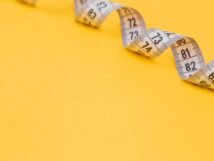Belly fat, also known as visceral fat, is the fat that accumulates around the abdominal organs. It is not only unsightly but also poses serious health risks. Excess belly fat has been linked to an increased risk of heart disease, type 2 diabetes, and certain types of cancer. Therefore, it is important to take steps to reduce belly fat for both aesthetic and health reasons.
Exercise plays a crucial role in reducing belly fat. When you engage in physical activity, your body burns calories, including those stored as fat. Regular exercise helps increase your metabolism, which in turn helps burn more calories throughout the day. Additionally, exercise helps build muscle mass, which can further boost your metabolism and help you burn more calories even at rest.
Key Takeaways
- Cardiovascular exercise is effective for reducing belly fat.
- High-Intensity Interval Training (HIIT) can be more effective than steady-state cardio for belly fat loss.
- Resistance training can help reduce belly fat and increase muscle mass.
- Yoga and Pilates can aid in belly fat reduction by improving core strength and flexibility.
- Swimming is a low-impact exercise that can help burn belly fat and improve overall fitness.
Cardiovascular Exercise and Belly Fat Reduction
Cardiovascular exercise, also known as aerobic exercise, is one of the most effective ways to burn calories and reduce belly fat. This type of exercise increases your heart rate and breathing rate, causing you to burn more calories during the workout and even after you've finished exercising.
Examples of cardio exercises that can help reduce belly fat include running, cycling, swimming, and dancing. These activities are not only effective at burning calories but also enjoyable and can be easily incorporated into your daily routine.
To maximize the benefits of cardiovascular exercise for belly fat reduction, aim for at least 150 minutes of moderate-intensity aerobic activity or 75 minutes of vigorous-intensity aerobic activity per week. You can break this down into smaller sessions throughout the week to make it more manageable.
High-Intensity Interval Training (HIIT) for Belly Fat Loss
High-Intensity Interval Training (HIIT) is a form of exercise that alternates between short bursts of intense activity and periods of rest or low-intensity activity. HIIT has been shown to be highly effective in reducing belly fat due to its ability to increase calorie burn and improve metabolic rate.
During a HIIT workout, you push yourself to your maximum effort for a short period of time, followed by a brief recovery period. This cycle is repeated for a set number of rounds or for a specific duration. HIIT workouts can be done with various exercises, such as sprinting, jumping jacks, burpees, or kettlebell swings.
A sample HIIT workout for belly fat loss could include 30 seconds of high-intensity exercise, such as sprinting or jumping jacks, followed by 30 seconds of rest or low-intensity exercise, such as walking or jogging in place. Repeat this cycle for 10-20 minutes, depending on your fitness level and time availability.
Resistance Training and Belly Fat Reduction
Resistance training, also known as strength training or weightlifting, is another effective method for reducing belly fat. While cardio exercises primarily focus on burning calories during the workout, resistance training helps build lean muscle mass, which can increase your metabolism and help you burn more calories throughout the day.
When you engage in resistance training, your muscles are challenged by external resistance, such as dumbbells, resistance bands, or your own body weight. This causes microscopic tears in the muscle fibers, which then repair and grow stronger during the recovery process.
Examples of resistance exercises that can help reduce belly fat include squats, lunges, deadlifts, push-ups, and planks. Aim to incorporate resistance training into your routine at least two to three times per week, targeting all major muscle groups.
Yoga and Pilates for Belly Fat Reduction
Yoga and Pilates are two forms of exercise that focus on strength, flexibility, and mindfulness. While they may not be as intense as cardio or resistance training workouts, they can still be effective in reducing belly fat.
Yoga poses that target the core muscles can help strengthen and tone the abdominal area. Some examples include boat pose, plank pose, and bridge pose. Pilates exercises, on the other hand, often involve controlled movements that engage the core muscles and promote stability and balance.
Incorporating yoga and Pilates into your routine can not only help reduce belly fat but also improve posture, flexibility, and overall body strength. Aim to practice yoga or Pilates at least two to three times per week for optimal results.
The Benefits of Swimming for Belly Fat Loss

Swimming is a low-impact exercise that can be highly effective in reducing belly fat. It engages multiple muscle groups, including the core, arms, legs, and back, while providing a cardiovascular workout.
Swimming helps burn calories and increase metabolism, making it an excellent choice for those looking to reduce belly fat. Additionally, the resistance provided by the water helps build lean muscle mass, which can further boost your metabolism and calorie burn.
To incorporate swimming into your workout routine for belly fat loss, aim for at least 150 minutes of moderate-intensity swimming or 75 minutes of vigorous-intensity swimming per week. You can mix up your swim sessions with different strokes, such as freestyle, backstroke, breaststroke, or butterfly, to target different muscle groups.
The Role of Diet in Belly Fat Reduction
While exercise is crucial for reducing belly fat, it is important to remember that diet also plays a significant role. No matter how much you exercise, if you are consuming more calories than you burn, you will struggle to lose belly fat.
To support belly fat loss, focus on consuming a balanced diet that is rich in whole foods such as fruits, vegetables, lean proteins, whole grains, and healthy fats. Avoid or limit processed foods, sugary drinks, and foods high in saturated fats and added sugars.
In addition to eating a healthy diet overall, consider incorporating specific foods that have been shown to aid in belly fat reduction. Some examples include green tea, avocados, nuts and seeds, fatty fish, and probiotic-rich foods like yogurt and sauerkraut.
Combining Different Exercises for Optimal Belly Fat Loss
To maximize belly fat loss, it is beneficial to combine different types of exercises into your routine. By incorporating cardio, HIIT, resistance training, yoga or Pilates, and swimming, you can target different muscle groups, increase calorie burn, and improve overall fitness.
A sample workout routine combining different exercises for belly fat loss could include three days of cardio exercises such as running or cycling, two days of HIIT workouts, two days of resistance training targeting all major muscle groups, two days of yoga or Pilates sessions focusing on core strength, and one day of swimming for a low-impact cardiovascular workout.
By varying your workouts and challenging your body in different ways, you can prevent plateaus and continue to see progress in reducing belly fat.
Common Mistakes to Avoid When Targeting Belly Fat
When trying to lose belly fat, it is important to avoid common mistakes that can hinder your progress. One common mistake is solely focusing on abdominal exercises in the hopes of spot-reducing belly fat. While targeted exercises can help strengthen and tone the abdominal muscles, they will not specifically burn belly fat. It is important to incorporate a variety of exercises that target different muscle groups and engage in overall calorie-burning activities.
Another mistake is relying solely on exercise without paying attention to diet. As mentioned earlier, diet plays a significant role in belly fat reduction. Even if you are exercising regularly, if you are consuming more calories than you burn, you will struggle to lose belly fat. It is important to maintain a balanced diet that supports your fitness goals.
Lastly, it is important to avoid overtraining or pushing yourself too hard without allowing for proper rest and recovery. Your body needs time to repair and rebuild after intense workouts. Overtraining can lead to injuries, burnout, and hinder your progress in reducing belly fat. Listen to your body and give yourself adequate rest days to prevent overtraining.
Maintaining a Consistent Exercise Routine for Long-Term Belly Fat Reduction
Consistency is key when it comes to long-term belly fat reduction. It is important to establish a regular exercise routine and stick to it. Set realistic goals and create a schedule that works for you. Find activities that you enjoy and that fit into your lifestyle, as this will increase the likelihood of sticking with your routine.
To stay motivated and consistent with your exercise routine, consider finding an accountability partner or joining a fitness class or group. Having someone to exercise with or being part of a community can provide support, encouragement, and help keep you on track.
Additionally, track your progress by keeping a workout journal or using fitness apps that allow you to log your workouts and monitor your progress. Seeing improvements in strength, endurance, and overall fitness can be highly motivating and help you stay committed to your exercise routine.
In conclusion, reducing belly fat is not only important for aesthetic reasons but also for overall health. Exercise plays a crucial role in belly fat reduction by burning calories, increasing metabolism, and building lean muscle mass. Cardiovascular exercise, HIIT, resistance training, yoga or Pilates, and swimming are all effective forms of exercise that can help reduce belly fat.
In addition to exercise, maintaining a healthy diet is essential for belly fat loss. Avoiding processed foods, sugary drinks, and foods high in saturated fats and added sugars while focusing on whole foods can support your fitness goals.
By combining different types of exercises into your routine, avoiding common mistakes, and maintaining consistency in your exercise routine, you can achieve long-term belly fat reduction. Start incorporating exercise into your daily routine today and reap the benefits of a healthier, leaner body.
If you're looking to burn belly fat, you might be interested in reading the article "The Science Behind Martial Arts: How It Can Boost Your Brainpower and Focus." This article explores the cognitive benefits of practicing martial arts and how it can contribute to overall weight loss. Check it out here.
FAQs
What is belly fat?
Belly fat, also known as visceral fat, is the fat that accumulates around the abdominal organs. It is considered to be harmful to health as it increases the risk of various diseases such as diabetes, heart disease, and certain cancers.
Why is it important to burn belly fat?
Burning belly fat is important for overall health and well-being. Excess belly fat can lead to various health problems, including insulin resistance, inflammation, and metabolic disorders. It is also linked to an increased risk of heart disease, stroke, and certain cancers.
Which exercise burns the most belly fat?
There is no one exercise that specifically targets belly fat. However, high-intensity interval training (HIIT) and strength training have been shown to be effective in reducing overall body fat, including belly fat. Cardiovascular exercises such as running, cycling, and swimming can also help burn calories and reduce belly fat.
How often should I exercise to burn belly fat?
To burn belly fat, it is recommended to engage in at least 150 minutes of moderate-intensity aerobic exercise or 75 minutes of vigorous-intensity aerobic exercise per week. This can be achieved through a combination of cardio, strength training, and HIIT workouts.
Can diet also help in burning belly fat?
Yes, diet plays a crucial role in burning belly fat. A healthy and balanced diet that is low in processed foods, sugar, and saturated fats can help reduce overall body fat, including belly fat. Eating a diet rich in fiber, protein, and healthy fats can also help keep you feeling full and satisfied, which can prevent overeating and weight gain.














